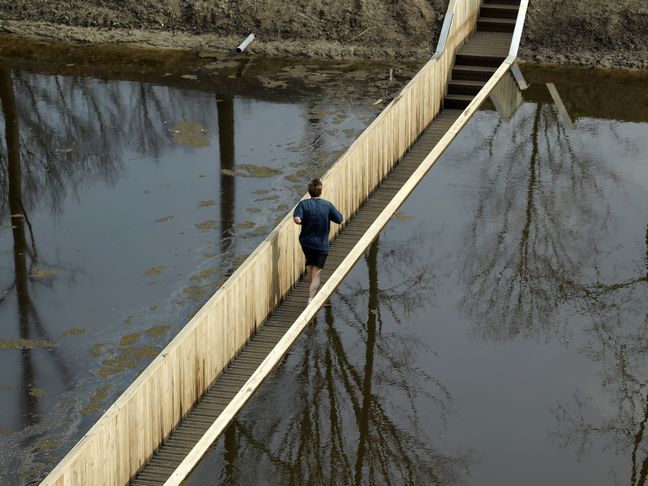Invisible Bridge in Water | Good Life
In the city of Halsteren in Holland, there is a moat that has been guarding the de Roovere castle since the 17th century. However, now that this fortress has taken on new recreational functions, it's clear that the moat has lost its original defensive purpose. A passage needed to be opened through the moat to guide visitors into the castle, and the Dutch architecture firm RO & AD brought forth this classic and interesting solution.
The architects believed it would be inappropriate to build a bridge over the former defensive water system. Therefore, they took an unconventional approach by constructing it below the waterline, turning it into an invisible bridge. It acts like a water channel; invisible from afar, and walking through it gives a wonderful feeling of floating in water. Moreover, it perfectly blends with the surrounding natural and historical landscapes without appearing out of place.
Its name is the Moses Bridge — because it draws inspiration from the biblical image of Moses parting the Red Sea.
